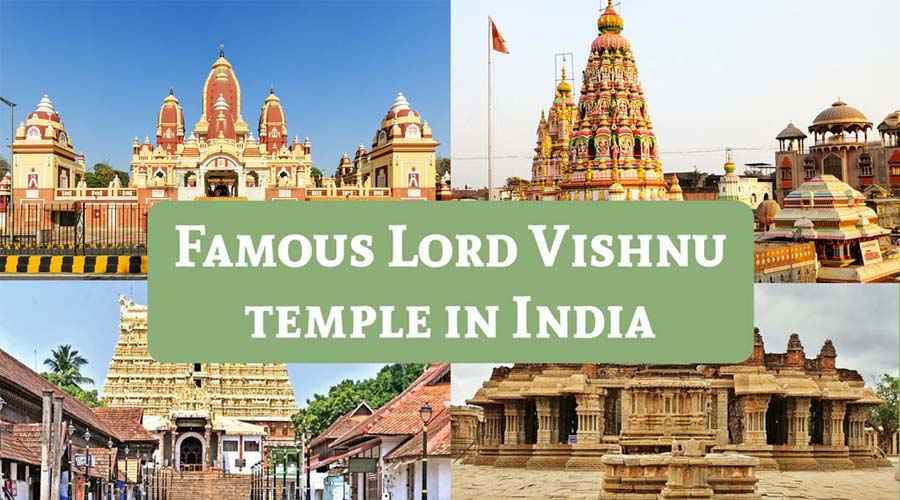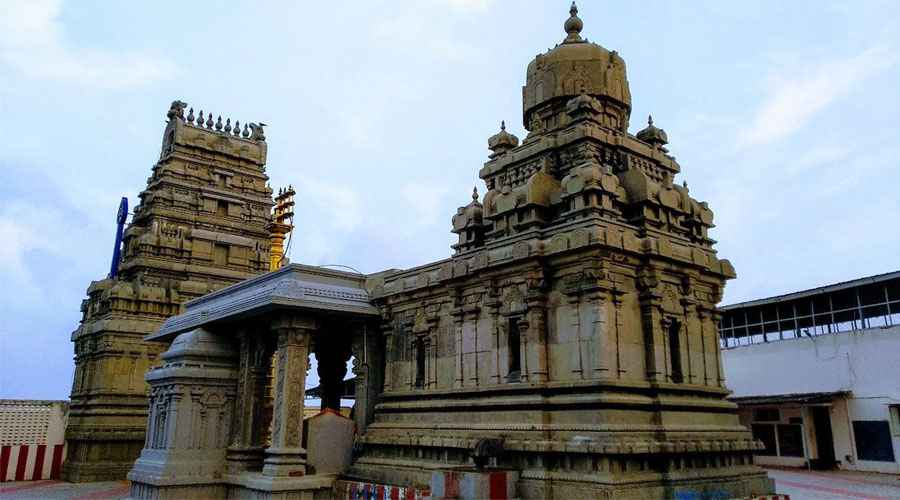India’s spiritual landscape is deeply enriched by temples dedicated to Lord Vishnu, revered as the preserver and protector of the universe in Hinduism. Worshipped in various forms and manifestations, Lord Vishnu’s temples attract millions of devotees annually, representing profound architectural beauty, rich heritage, and timeless spiritual significance. This article explores the top 10 Lord Vishnu temples in India, delving into their unique charm, history, and religious importance.
1. Badrinath Temple, Uttarakhand
Nestled in the majestic Himalayas at an altitude of 3,133 meters, Badrinath Temple is one of the most sacred Vishnu shrines in India. It forms part of the revered Char Dham pilgrimage circuit, drawing devotees from across the world. Dedicated to Lord Badrinath (a form of Vishnu), the temple’s black stone idol is believed to be self-manifested. The temple’s location, surrounded by snow-capped peaks and the sacred Alaknanda River, offers a breathtakingly serene spiritual experience. The temple’s origins are linked to the sage Adi Shankaracharya, who revitalized it in the 8th century CE.
2. Ranganathaswamy Temple, Srirangam, Tamil Nadu
Located on the island of Srirangam in the Kaveri River, this temple complex is one of the largest fully functional Hindu temples in the world, sprawling over 156 acres. Dedicated to Lord Ranganatha, a reclining form of Vishnu on the serpent Adisesha, it is highly significant within the Sri Vaishnavism tradition. The temple’s intricate Dravidian architecture, vast courtyards, and majestic gopurams (towering gateways) showcase South Indian artistry at its finest. Also considered a foremost Divya Desam—108 sacred Vishnu shrines praised by Tamil Alvar saints—this temple embodies deep spiritual and cultural heritage.
3. Padmanabhaswamy Temple, Thiruvananthapuram, Kerala
Known for its exquisite blend of Dravidian and Kerala architectural styles, the Padmanabhaswamy Temple enshrines Lord Vishnu as Padmanabha, reclining on the cosmic serpent Ananta. Located in Kerala’s capital, Thiruvananthapuram, this temple is one of the 108 Divya Desams and famous for its wealth, historical significance, and strict traditional rituals. The idol is crafted from a rare amalgam and represents cosmic protection and preservation. The temple’s ancient origins and mystery have fascinated historians and devotees alike, making it a vital pilgrimage destination.
4. Tirupati Balaji Temple, Andhra Pradesh
Tirupati’s Sri Venkateswara Temple—popularly known as Tirupati Balaji—is arguably India’s wealthiest and most visited temple. Situated atop the Tirumala Hills, it enshrines Lord Venkateswara, a manifestation of Vishnu who is believed to grant boons and fulfill devotees’ wishes. The temple’s elaborate daily rituals, grand festivals, and immense crowd illustrate its spiritual magnetism. The practice of donating hair as a token of surrender and the temple’s vast charitable activities add to its renown.
5. Guruvayur Temple, Thrissur, Kerala
Celebrated as the “Dwarka of the South,” the Guruvayur Temple is dedicated to Lord Krishna, the most beloved avatar of Vishnu. Located in Kerala’s Thrissur district, it is one of the ancient temples, more than 5,000 years old according to tradition. Known for its strict adherence to rituals, only Hindus are allowed entry, ensuring the sanctity of worship. The idol, referred to as Lord Guruvayurappan, is crafted from sacred black stone. Guruvayur attracts devotees for its spiritual atmosphere and is linked to thousands of legends.
6. Jagannath Temple, Puri, Odisha
An iconic temple dedicated to Lord Jagannath, a form of Vishnu, this shrine in Puri is famous worldwide for its Rath Yatra (Chariot Festival). Constructed in the 12th century by King Anantavarman Chodaganga Deva, it symbolizes Lord Vishnu’s accessibility to all devotees, regardless of caste or creed. The triad idols of Jagannath, Balabhadra, and Subhadra attract millions annually. The temple is a key pilgrimage site of the Char Dham circuit and epitomizes Odisha’s rich heritage and spiritual diversity.
7. Dwarkadhish Temple, Dwarka, Gujarat
Situated on the western coast of India, Dwarkadhish Temple is dedicated to Lord Krishna, revered as the “King of Dwarka.” The temple is believed to have been originally built over 2,000 years ago and expanded over centuries. Featuring classic Chalukya architecture, it is a five-storied structure with 72 intricately carved pillars. Dwarka was the legendary kingdom of Krishna during the Dwapara Yuga, making this temple a significant historical and devotional site in Vishnu worship.
8. Lakshmi Narayan Temple, Delhi
Also known as Birla Mandir, this temple in New Delhi is dedicated to Lord Vishnu (Narayan) and Goddess Lakshmi. It combines modern architectural design with traditional Hindu motifs and serves as a spiritual hub in the capital city. This temple is known for promoting values of peace, prosperity, and harmony in society through worship and cultural events. The temple attracts thousands of devotees and tourists for its serene ambiance and religious significance.
9. Lakshmi Narasimha Temple, Goa
Located in Veling village, Goa, this temple is dedicated to Lord Narasimha—the fourth incarnation of Vishnu, depicted as a half-man, half-lion. The iconography commemorates the protective aspect of Vishnu, who manifested to save his devotee Prahlada from the demon Hiranyakashyap. The temple’s unique setting amidst Goa’s lush greenery and its striking 6.7-meter-tall idol of Narasimha attract many devotees seeking divine protection and blessings.
10. Ramanathaswamy Temple, Bhadrachalam, Telangana
This temple is sacred to Lord Rama, who is an incarnation of Vishnu, and is known as one of the prominent Rama temples in India. Located on the banks of the Godavari River, Bhadrachalam is sometimes called the “Dakshina Ayodhya.” The temple idol represents Vaikuntha Rama, a four-armed form of the deity, and is considered self-manifested. The temple is renowned for its peaceful riverside location, beautiful architecture, and deep spiritual significance.
These ten temples not only showcase the divine beauty and cultural richness of Lord Vishnu’s worship across India but also invite devotees and travelers alike to experience faith, art, and history intertwined. From the snow-capped Himalayas to the serene coasts of Kerala and Goa, Vishnu temples remain pillars of India’s spiritual heritage.
If a deeper or more personalized article is needed, the above descriptions can be expanded with local legends, festival details, and architectural nuances. Let me know if a full 900-word polished draft with such additions is required.

